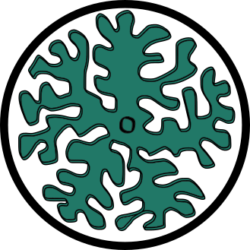Time-lapse microscopy allows us to observe the swarm at the correct time-scale. As the machine observe a succession of images it can start to detect the field of activity where more change in the images occurs. Using OpenCV we can exploit the correlation of swarming activity (cells swarm together) and analyse the pattern of optical flow in the data.
Optical flow: machine learning swarm development
The Open CV lib allows us to perform optical flow analysis which we then threshold and cluster to obtain lattice animals containing information about the coherence of displacement. A similar analysis on the rotor of the optical flow field allows to detect rotational patterns in the vector field. With this info machine learned dictionaries of dynamic structures of swarm development are built by HomeScope algorithms. The basic ecology the swarm is following has to do with exploitation of local (micro-terroitories) opportunity, dispersal and recruitment into suitable locations and to growth up in scape by finding better locations within a landscape of ecological opportunity.
